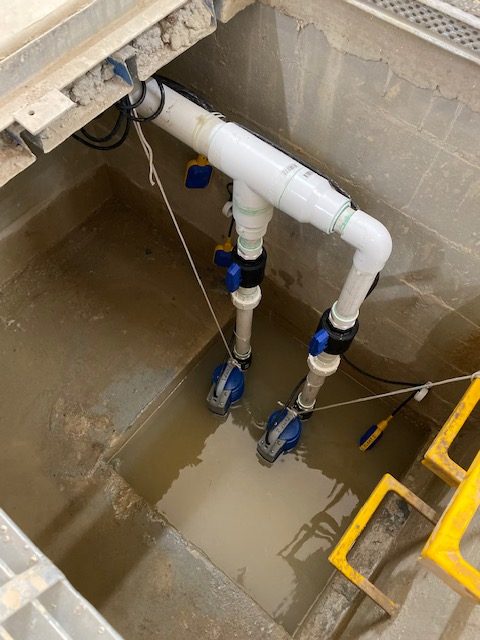What to do when you receive a call about a large basement car-park that is under water? The system has dual stormwater pumps with low, mid & high level floats with a control panel.We were advised that both pumps had failed & would need to be repaired.
We arrived on site to find a stormwater pit approx 1m x 1m x 1m deep completely full, 4 smaller collection pits also full & approx 100mm water through the carpark. What was worse was a horrible smell almost like sewage that was wafting throughout the car-park.
Not hard to see why when there had been NO MAINTENANCE carried out on this pit in well over 10 years.
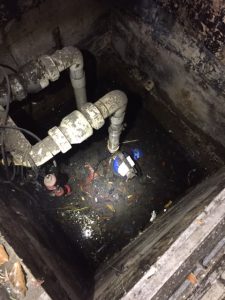
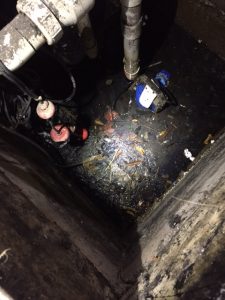
We turned the power on to the system & manually activated the pumps & to our surprise, one pump on the control panel was showing that it was running. This pump was on but it was not pumping any water.
The 2nd pump did not want to work at all.
We proceeded to pump the water out of the pit using our spare high flow pump with attached lay flat hose so that we could get a better look at the pumps.
As the pit began to empty out, all we could see was approx 300mm of sludge in the pit & the pumps were barely visible. These poor drainage pumps were trying to work but their intake was completely blocked to a point where the water could not get through.
As the sludge in the pit was so thick & oily, we could not pump it out to the kerb so the smelly, black gunk was shovelled out into buckets & disposed of. The pit contained pencils, a coke can, sticks, a plank of wood, chip wrappers, plastic bags, an action man figurine & other debris that we could not even identify.
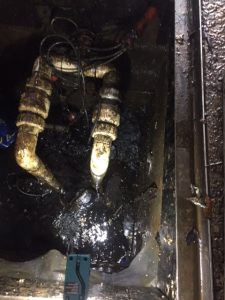
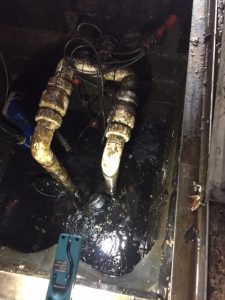
The pumps were disconnected & removed so that they could be inspected. It is not surprising that neither pump was actually pumping water as the suction strainers were completely blocked. I liken it to be told to breathe while a pillow is placed over your face. No matter how hard these pumps attempted to pump water, there was no way that they were going to be able to do their job due to the amount of rubbish they had sucked up.
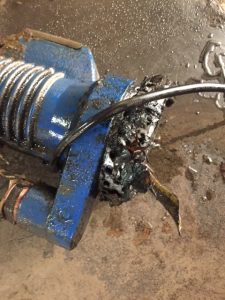
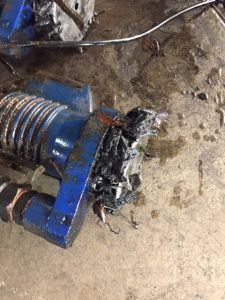
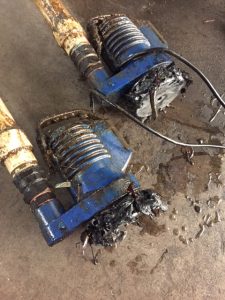
Both suction strainers were cleaned & hosed down & then re-installed back in the pit. This was a temporary measure only as this pit pit really needed to be completely cleaned out by qualified professionals otherwise the same issues would arise in the future. Unfortunately, only one pump continued to work so the 2nd pump was removed to see if it could be salvaged.
It is worth noting that the 2 pumps that were in this pit were really not the best pumps for the job. They were small drainage pumps with a particle size of only 7mm so it is no wonder that the inlets were completely blocked given the range of material found in the driveway pit.
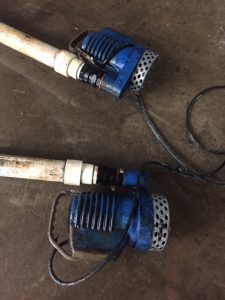
We then provided feedback to the client & advised that at this stage only one pump was operating & we could not guarantee how long it would continue to perform given that it now had to do the work for both pumps.
We strongly recommended that the large pump pit & the 4 smaller pits be professionally cleaned & pumped out. We also felt that Zenit Vortex pumps would be more suitable.
Thankfully, after having no maintenance carried out for over 10 years, our client agreed to have the pits properly cleaned & they made a wise decision to have 2 x ZEN-DGBLUE/75/2/G40VMEX installed. These pumps have a recessed impellers & an open cast iron support base assisting in the passage of soft solids to 40mm.
We engaged the services of Brandster Services who did a fabulous job of cleaning the pits & removing the remainder of the sludge from the base & sides.
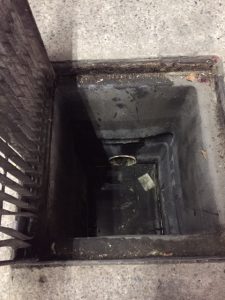
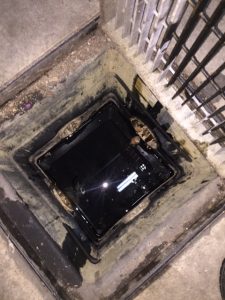
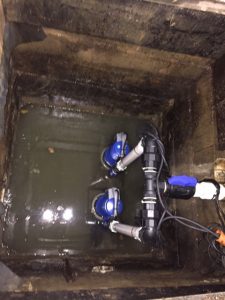
The new Zenit pumps were installed on a raised concrete pad, the pipework was replaced & the pumps were then commissioned.
REGULAR MAINTENANCE is the key to ensuring that any submersible pump is working at its optimum level.
There is no point waiting til the pit overflows or is inundated by torrential rain to realise that your pumps are no longer working.



